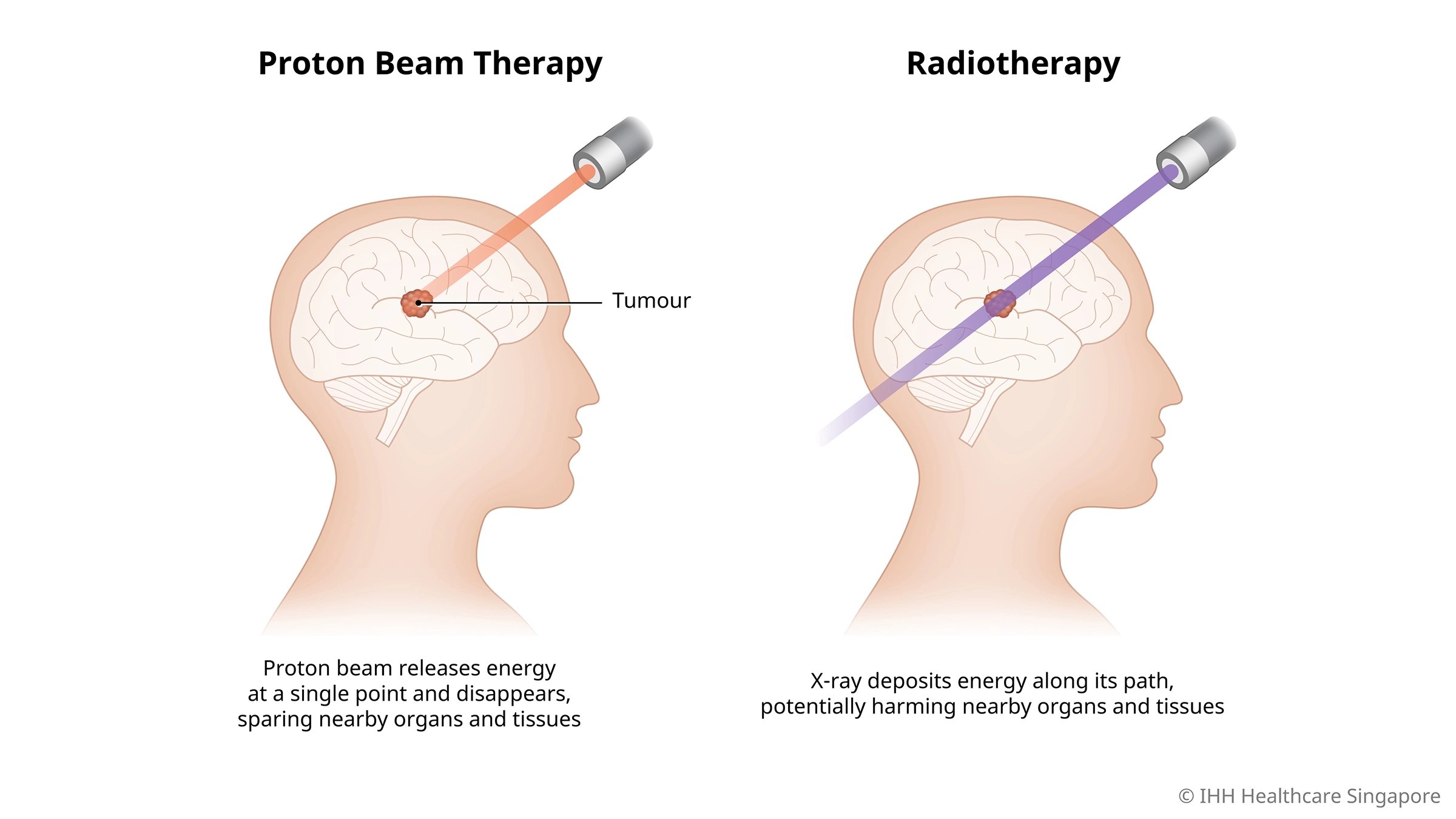Proton Therapy
.webp?sfvrsn=a3cedba7_1)
Overview
What is Proton Therapy?
Proton therapy, also known as proton beam therapy, is a highly advanced and precise radiation treatment that uses proton beams to destroy cancer cells.
How does Proton Therapy work?
Protons are positively charged particles and are extracted from hydrogen atoms. The proton particles are then injected into either a cyclotron or a synchrotron which acts as a particle accelerator.
Using electromagnetic fields, the cyclotron accelerates the protons in a circular path and increases their energy to a total of 70 to 250 million electron volts—energy levels that are enough to deliver the protons to the tumour at any depth within the patient’s body. A series of superconducting magnets then move these accelerated protons through a beam-transport system as they leave the cyclotron or synchrotron into the patient treatment room.
Historically, early Proton Centres adopted multi-room treatment systems—occupying much land—but increasingly, compact single room systems are becoming popular in land scarce or heavily built-up localities.
Proton versus Photon Therapy
Compared to traditional radiation treatment which uses X-ray beams or photons, the main difference with proton therapy is that when the proton beam is shot into the body targeting the area of cancer, it delivers minimal entrance radiation and stops without moving beyond the tumour. In other words, there is no exit dose, and surrounding healthy organs and tissues are spared from radiation exposure.

What conditions can it treat?
Proton therapy can benefit both adult and paediatric patients and it can be used to treat a wide range of cancers, including cancers of the brain, oesophageal, gastrointestinal, head and neck, liver, lymphoma, prostate, soft tissue, and spine.
Central nervous system tumours, sino-nasal tumours, base of skull and sacral chordomas comprise other examples. Re-treatment of tumours in previously irradiated sites may also benefit from proton therapy. For such patients, case selection is important.
Receiving Proton Therapy
Proton therapy is not very different from the process employed during traditional radiation treatment.
Selected patients would undergo the process of fitting of immobilisation devices, treatment simulation with CT scans and/or PET-CT scans, and/or MRI scans for tumour localisation, days before the actual delivery of proton therapy.
The radiation oncologist would then carry out treatment planning with his team of dosimetrists and physicists for the best dose distribution to achieve best coverage of the tumour while reducing radiation doses to normal tissues. Patient quality assurance is then carried out before the treatment commences.
Special care is taken in ensuring accurate treatment set up, including CT imaging to ascertain the exact position of the tumour and positional correction.
Proton therapy is then done using a machine called a gantry, which rotates around patient’s body and focuses proton beams at marked places on the body. The protons pass through the equipment and are directed to the tumour.1
For children, sedation is often employed to avoid movement-related inaccuracies during treatment. The process often translates to a slightly longer treatment session for each patient.
Side Effects of Proton Therapy
Patients may experience fatigue and tiredness after a treatment session. They may also notice skin redness in the area where the proton beams were targeted. However, these side effects will subside on their own.1
Depending on the area treated, other side effects may include headaches and problems with eating and digestion.1
Benefits & Challenges
Benefits
Benefits of proton therapy include:1
- Minimises radiation exposure of healthy tissues
- Fewer short and long-term effects
- Lower integral dose per treatment
- Can treat recurrent tumours in patients who have already received radiation
- Potentially reduces the risk of secondary cancers
- Improve patient's quality of life
Paediatric tumours would also benefit from proton therapy as it may significantly reduce acute and long-term side effects such as: growth abnormalities, neurologic complications, reduced IQ, cardiac, lung and bowel side effects, reduced fertility and second malignancies.
Disadvantages
This newer form of treatment is not widely available as it requires highly specialised and advanced equipment. Due to the sophistication of its technology, proton therapy will also cost more than traditional radiation therapy.1
Proton therapy, however, has been proven to be effective in adults and children, and is increasingly being used to treat cancer due to its few side effects, and minimal damage to surrounding healthy tissue and vital organs during the radiation process.
Content Reference